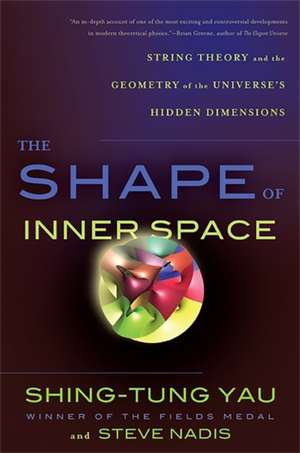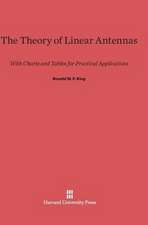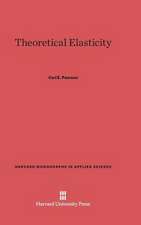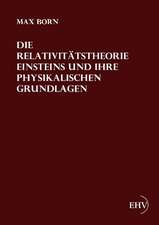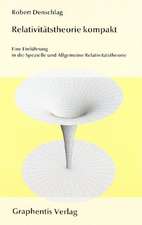The Shape of Inner Space: String Theory and the Geometry of the Universe's Hidden Dimensions
Autor Shing-Tung Yau, Steve Nadisen Limba Engleză Paperback – 5 mar 2012 – vârsta de la 13 ani
String
theory
says
we
live
in
a
ten-dimensional
universe,
but
that
only
four
are
accessible
to
our
everyday
senses.
According
to
theorists,
the
missing
six
are
curled
up
in
bizarre
structures
known
as
Calabi-Yau
manifolds.
InThe
Shape
of
Inner
Space,
Shing-Tung
Yau,
the
man
who
mathematically
proved
that
these
manifolds
exist,
argues
that
not
only
is
geometry
fundamental
to
string
theory,
it
is
also
fundamental
to
the
very
nature
of
our
universe.
Time
and
again,
where
Yau
has
gone,
physics
has
followed.
Now
for
the
first
time,
readers
will
follow
Yau’s
penetrating
thinking
on
where
we’ve
been,
and
where
mathematics
will
take
us
next.
A
fascinating
exploration
of
a
world
we
are
only
just
beginning
to
grasp,The
Shape
of
Inner
Spacewill
change
the
way
we
consider
the
universe
on
both
its
grandest
and
smallest
scales.
Preț: 204.80 lei
Nou
Puncte Express: 307
Preț estimativ în valută:
39.19€ • 40.77$ • 32.36£
39.19€ • 40.77$ • 32.36£
Carte tipărită la comandă
Livrare economică 14-28 aprilie
Preluare comenzi: 021 569.72.76
Specificații
ISBN-13: 9780465028375
ISBN-10: 0465028373
Pagini: 400
Ilustrații: 20 b/w figures
Dimensiuni: 159 x 235 x 25 mm
Greutate: 0.48 kg
Ediția:First Trade Paper ed.
Editura: BASIC BOOKS
Colecția Basic Books
ISBN-10: 0465028373
Pagini: 400
Ilustrații: 20 b/w figures
Dimensiuni: 159 x 235 x 25 mm
Greutate: 0.48 kg
Ediția:First Trade Paper ed.
Editura: BASIC BOOKS
Colecția Basic Books
Notă biografică
Shing-Tung
Yauhas
won
many
awards,
including
the
Fields
Medal.
He
is
a
professor
of
mathematics
at
Harvard
University
and
lives
in
Cambridge,
Massachusetts.
Steve Nadisis a Contributing Editor toAstronomy Magazine. He has published articles inNature,Science,Scientific American,New Scientist,Sky&Telescope,The Atlantic Monthly, and other journals. He has written or contributed to more than two dozen books. A former staff researcher for the Union of Concerned Scientists, Nadis has also been a research fellow at MIT and a consultant to the World Resources Institute, the Woods Hole Oceanographic Institution, and WGBH/NOVA. He lives in Cambridge, Massachusetts.
Steve Nadisis a Contributing Editor toAstronomy Magazine. He has published articles inNature,Science,Scientific American,New Scientist,Sky&Telescope,The Atlantic Monthly, and other journals. He has written or contributed to more than two dozen books. A former staff researcher for the Union of Concerned Scientists, Nadis has also been a research fellow at MIT and a consultant to the World Resources Institute, the Woods Hole Oceanographic Institution, and WGBH/NOVA. He lives in Cambridge, Massachusetts.
Recenzii
,
Vols.
1
&
2
“Einstein’s vision of physical laws emerging from the shape of space has been expanded by the higher dimensions of string theory. This vision has transformed not only modern physics, but also modern mathematics. Shing-Tung Yau has been at the center of these developments. In this ambitious book, written
Of course, none of this could have been foretold more than a half century ago when a man named Eugenio Calabi — the first half of the Calabi-Yau duo — proposed that there could be multidimensional spaces with properties so special that many mathematicians, including one of this book's authors, considered them "too good to be true." Calabi had not been thinking about physics at the time, in the early 1950s, when he advanced the famous conjecture named after him. Following the proof of the Calabi conjecture, we have learned many new and wonderful things in both physics and mathematics — all of which suggest that Calabi-Yau spaces are not only too good to be true, as the skeptics used to say, but that they may be even better.
“In the fascinating book,The Shape of Inner Space… Shing-Tung Yau, along with coauthor Steve Nadis, describes the exciting development of the theory of what are now called Calabi-Yau manifolds and their relationship to the structure of the universe.”
“Einstein’s vision of physical laws emerging from the shape of space has been expanded by the higher dimensions of string theory. This vision has transformed not only modern physics, but also modern mathematics. Shing-Tung Yau has been at the center of these developments. In this ambitious book, written
Newsletter
of
the
European
Mathematical
Society
Of course, none of this could have been foretold more than a half century ago when a man named Eugenio Calabi — the first half of the Calabi-Yau duo — proposed that there could be multidimensional spaces with properties so special that many mathematicians, including one of this book's authors, considered them "too good to be true." Calabi had not been thinking about physics at the time, in the early 1950s, when he advanced the famous conjecture named after him. Following the proof of the Calabi conjecture, we have learned many new and wonderful things in both physics and mathematics — all of which suggest that Calabi-Yau spaces are not only too good to be true, as the skeptics used to say, but that they may be even better.
BLURBS
Brian Greene, Professor of Mathematics & Physics, Columbia University; author of The Fabric of the Cosmos and The Elegant Universe
“The Shape of Inner Space provides a vibrant tour through the strange and wondrous possibility that the three spatial dimensions we see may not be the only ones that exist. Told by one of the masters of the subject, the book gives an in-depth account of one of the most exciting and controversial developments in modern theoretical physics.”
Brian Greene, Professor of Mathematics & Physics, Columbia University; author of The Fabric of the Cosmos and The Elegant Universe
“The Shape of Inner Space provides a vibrant tour through the strange and wondrous possibility that the three spatial dimensions we see may not be the only ones that exist. Told by one of the masters of the subject, the book gives an in-depth account of one of the most exciting and controversial developments in modern theoretical physics.”
Joe
Polchinski,
Professor
of
Physics,
University
of
California
-
Santa
Barbara;
author
of String
Theory
American
Journal
of
Physics
“The Shape of Inner Spaceis a portrait of a beautiful branch of geometric analysis as seen through the eyes of one of its pioneers, Fields medal winner Shing-Tung Yau… After describing the sequence of events that led him to the United States and to his enamoration with geometry, Yau explains as only a master could the conjecture by Calabi and the subsequent discovery of Calabi-Yau manifolds that are the centerpiece of this book. The reader is thrown into a world of complex manifolds, geometric analysis, and differential equations, yet the book is written so that the persistent layperson could follow all of the main ideas.”
Notes
of
the
Canadian
Mathematical
Society“The Shape of Inner Spaceis a portrait of a beautiful branch of geometric analysis as seen through the eyes of one of its pioneers, Fields medal winner Shing-Tung Yau… After describing the sequence of events that led him to the United States and to his enamoration with geometry, Yau explains as only a master could the conjecture by Calabi and the subsequent discovery of Calabi-Yau manifolds that are the centerpiece of this book. The reader is thrown into a world of complex manifolds, geometric analysis, and differential equations, yet the book is written so that the persistent layperson could follow all of the main ideas.”
“In the fascinating book,The Shape of Inner Space… Shing-Tung Yau, along with coauthor Steve Nadis, describes the exciting development of the theory of what are now called Calabi-Yau manifolds and their relationship to the structure of the universe.”
Philippine
Daily
Inquirer
“A journey into the mind of a brilliant mathematician,The Shape of Inner Spacewill delight readers who are not afraid to use their minds.”
“A journey into the mind of a brilliant mathematician,The Shape of Inner Spacewill delight readers who are not afraid to use their minds.”
College
Mathematics
Journal
“A
worthy
successor
to The
Elegant
Universe.”
AUTHORS'
STATEMENT by
SHING-TUNG
YAU
and
STEVE
NADIS
There is a certain irony running through this book that one of the smallest things you can possibly imagine — six-dimensional geometric spaces that may be more than a trillion times smaller than an electron — could, nevertheless, be one of the defining features of our universe, exerting a profound influence that extends to every single point in the cosmos. This book is, in many ways, the story of those spaces, which physicists have dubbed "Calabi-Yau manifolds." It tells how one of us, Yau, managed to prove the existence, mathematically, of those spaces, despite the fact that he had originally set out to prove that such spaces could not possibly exist. It then goes on to explain how this mathematical proof, which had initially been ignored by physicists (partly because it was steeped in difficult, nonlinear arguments), nevertheless made its way into the center of string theory, which now stands as the leading theory of the universe and our best hope yet of unifying all the particles and forces observed — and yet to be observed--in nature.
There is a certain irony running through this book that one of the smallest things you can possibly imagine — six-dimensional geometric spaces that may be more than a trillion times smaller than an electron — could, nevertheless, be one of the defining features of our universe, exerting a profound influence that extends to every single point in the cosmos. This book is, in many ways, the story of those spaces, which physicists have dubbed "Calabi-Yau manifolds." It tells how one of us, Yau, managed to prove the existence, mathematically, of those spaces, despite the fact that he had originally set out to prove that such spaces could not possibly exist. It then goes on to explain how this mathematical proof, which had initially been ignored by physicists (partly because it was steeped in difficult, nonlinear arguments), nevertheless made its way into the center of string theory, which now stands as the leading theory of the universe and our best hope yet of unifying all the particles and forces observed — and yet to be observed--in nature.
